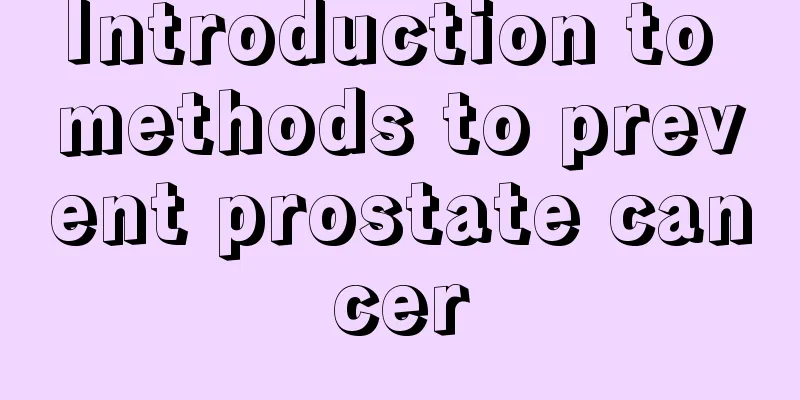Physiological mechanism of spinal anesthesia

|
Many of us have had problems with our spinal canals. Spinal canal problems affect the normal quality of life of many people. Many people do not pay attention to these problems, resulting in severe worsening of intraspinal infection, which has caused many people to face health threats and have to resort to surgery for treatment. Surgical treatment inevitably requires spinal anesthesia. Anesthesia can reduce the pain of our bodies. Maybe everyone does not know much about the issue of spinal anesthesia. Let us learn about the relevant content of spinal anesthesia below. Physiological mechanism: 1. Site of drug action During subarachnoid anesthesia, local anesthetics selectively act on the exposed anterior and posterior roots of the spinal nerves, and partially act on the surface of the spinal cord. The mechanism of epidural block is more complicated. Local anesthetics act on the spinal nerves and the surface of the spinal cord through paraspinal tissues, subarachnoid block, and other pathways. 2. Nerve block sequence The order of blocking different nerve fibers is different, usually sympathetic nerve → cold sensation → warm sensation → temperature recognition → dull pain sensation → sharp pain sensation → disappearance of touch sensation → motor nerve (muscle relaxation) → disappearance of proprioception. Therefore, after anesthesia, patients usually feel warmth, numbness, loss of pain, loss of movement, and even loss of proprioception (i.e., they cannot feel the existence of their lower limbs) in their lower limbs or buttocks. 3. Effects on the body (1) During spinal anesthesia of the cardiovascular system, the sympathetic nerves are blocked, causing the small arteries in the area innervated by the blocked nerves to dilate, resulting in a decrease in peripheral vascular resistance; the veins dilate, increasing the capacity of the venous system, resulting in a decrease in the amount of blood returning to the heart, and a decrease in cardiac output, leading to a decrease in blood pressure. However, the occurrence of hypotension and the extent of blood pressure drop are closely related to the size of the blockade, the patient's general condition and the body's compensatory ability. High block level, wide anesthesia range and insufficient compensatory capacity of the patient’s circulatory system are the main reasons for hypotension after blockade[2]. (2) The effect of intrathecal anesthesia on respiratory function mainly depends on the range and degree of blockade of the spinal nerves that control the motor function of the intercostal muscles and diaphragm. When most or all of the intercostal muscles are paralyzed, lung ventilation function is affected to varying degrees. If the phrenic nerve is also blocked, severe hypoventilation or respiratory arrest may result. (3) During spinal anesthesia of the digestive system, the sympathetic nerves are blocked, the vagus nerve function is relatively hyperactive, and gastrointestinal motility is enhanced, which can cause nausea and vomiting. When the surgery stretches the abdominal viscera or the blood pressure drops rapidly and the drop is large, the central nervous system will be ischemic and hypoxic, which may lead to vomiting. Pinching the abdomen can also cause nausea and vomiting. (4) After the sympathetic nerves in the lumbar sacral segment of the urinary system are blocked, the urethral sphincter contracts and the detrusor relaxes, which can cause urinary retention. The previous content introduced us to the relevant content of spinal anesthesia. I believe we all have a general understanding of this issue. Of course, we also need to understand many precautions for anesthesia. If local anesthesia is possible, try not to use general anesthesia, otherwise it will cause us unnecessary harm. |
<<: Lactate dehydrogenase assay method
>>: The relationship between normal gallbladder size and health
Recommend
What causes dark spots on the face?
Sometimes, you will suddenly find black spots on ...
Lithospermum officinale oil for facial redness
When there are red blood streaks on your face, al...
What is sodium bisulfite
Sodium bisulfite is in the form of white crystall...
Types of Aloe Vera
Aloe vera is a plant. Aloe vera has many uses, es...
Anti-inflammatory drugs that do not stimulate appetite
The main function of anti-inflammatory drugs is t...
Is the fortune tree poisonous?
As the real economy in modern society is getting ...
What foods can kill pancreatic cancer cells
Many people think that snacking is a bad habit. I...
What can I eat if I have prostate cancer
If you don't want to be tortured by the disea...
What are the symptoms of advanced lung cancer? These symptoms of advanced lung cancer are the most obvious
In our lives, there is often a saying that when w...
Healthy dinner abides by the "four no" policy
There seems to be less mention of how to eat more...
What is the method to determine the gender of the embryo?
During the pregnancy, the whole family is very co...
Complications of chemotherapy for esophageal cancer
What are the complications after surgery for esop...
How much does it cost to treat teratoma
How much does it cost to treat teratoma? Cost is ...
What are the pathogenicity of anthrax bacteria?
Anthrax is a very serious pathogen that mainly oc...
Is Yangxueyin oral liquid effective for leucorrhea
Nowadays, many people often need to nourish blood...









